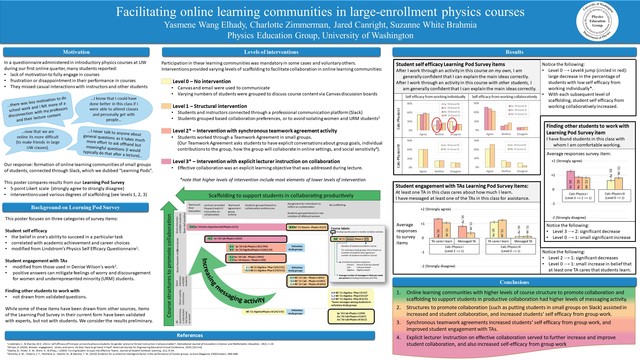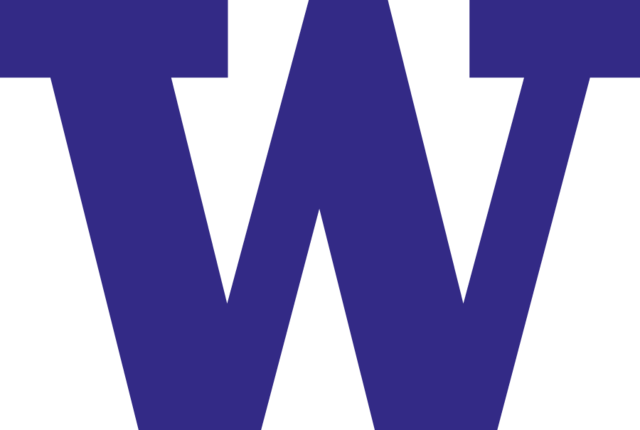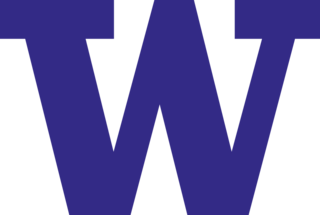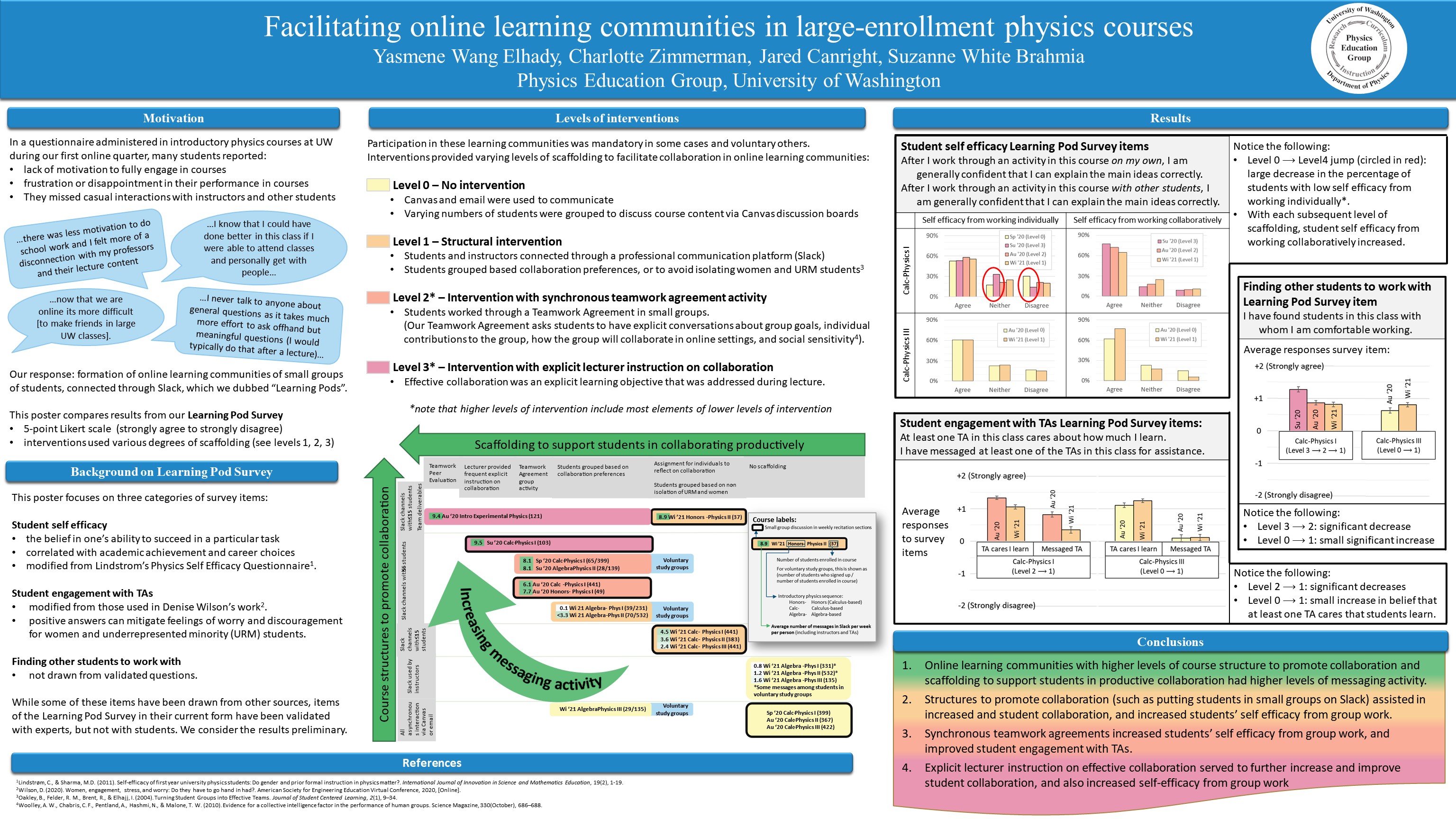Skip to main contentResource added 
Facilitating online learning communities in large-enrollment physics courses

Full description
Video Presentation
Authors:
- Yasmene Wang Elhady, Physics, UW Seattle
- Charlotte Zimmerman, Physics, UW Seattle
- Jared Canright, Physics, UW Seattle
- Suzanne White Brahmia, Physics, UW Seattle
Abstract:
Social isolation is a significant challenge for students in online instruction. When UW moved suddenly to online instruction at the outset of spring quarter 2020, instructors made earnest efforts to adapt their courses quickly. In a survey administered in introductory physics courses at the University of Washington, many students reported that they struggled to find motivation to fully engage in various aspects of introductory physics courses, and that they lacked meaningful support or comradery from their peers. In response, we formed online learning communities of small groups of students, connected through Slack, which we dubbed “Learning Pods”. In the summer quarter Learning Pods became the organizing structure of the introductory calculus-based mechanics course (Physics 121). TAs mentored students to collaborate during synchronous Tutorials and asynchronous labs. In addition to Physics 121, Learning Pods were piloted in Fall quarter in Physics 231, Introduction to Experimental Physics. Preliminary observations comparing summer quarter 2020 to spring quarter 2020 suggest a positive impact on student confidence in their ability to explain main ideas correctly, and lowered barriers for engagement with TAs, and that many students were able to connect with peers in various ways that they described as productive. I will describe the Learning Pod interventions, and present preliminary survey results from various introductory physics courses that have been conducted in online settings at UW. Enrollment in these courses vary from about 100 students to 500 students.*This work is supported in part by the University of Washington Curricular Commons Innovation Fund, 2020Poster PDF
View a PDF version of the poster in Google Drive to enlarge the image or download a copy.
Comments
The presenter for this poster will be available to respond to comments during Poster Session 2 on April 20, 3:45-4:30 p.m.Comments
to view and add comments.
Annotations
No one has annotated a text with this resource yet.
- typeImage
- created on
- file formatjpg
- file size1 MB
- publisherUniversity of Washington
- rights


